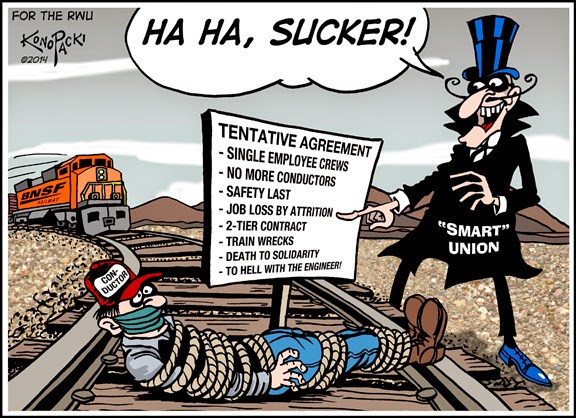By Out of the Woods - libcom.org, June 30, 2014
Disclaimer: The views expressed here are not the official position of the IWW (or even the IWW’s EUC) and do not necessarily represent the views of anyone but the author’s.
 Influential metaphors for understanding the environment serve as a bridge between traditional conservatism and outright ecofascism.
Influential metaphors for understanding the environment serve as a bridge between traditional conservatism and outright ecofascism.
We have so far introduced the ideas of thinkers we find useful, such as Murray Bookchin’s philosophy of technology, and James O’Connor’s notion of the second contradiction. Here we want to look at how ecological ideas can be deployed to support deeply reactionary politics. We will do this with a critical introduction to the oft-cited, though less often read, biologist Garrett Hardin.
The tragedy of capital
Hardin’s most famous and influential concept is the tragedy of the commons, a collective action problem posited to lead all common resources to inevitable ruin. He first set the problem out in his 1968 essay of the same name:
The tragedy of the commons develops in this way. Picture a pasture open to all. It is to be expected that each herdsman will try to keep as many cattle as possible on the commons. (…)As a rational being, each herdsman seeks to maximize his gain. Explicitly or implicitly, more or less consciously, he asks, "What is the utility to me of adding one more animal to my herd?" (…)the rational herdsman concludes that the only sensible course for him to pursue is to add another animal to his herd. And another; and another.... But this is the conclusion reached by each and every rational herdsman sharing a commons. Therein is the tragedy. Each man is locked into a system that compels him to increase his herd without limit--in a world that is limited. Ruin is the destination toward which all men rush, each pursuing his own best interest in a society that believes in the freedom of the commons. Freedom in a commons brings ruin to all.
There are numerous lines of criticism here. First of all, despite being published in Science, Hardin doesn’t present any actual evidence, only a thought experiment. Subsequently, in 1990, Elinor Ostrom published ‘Governing the commons’, a work that won her a Nobel Prize in economics for showing that commons do not necessarily tend to mutual ruin. Hardin subsequently conceded his argument only applied to unmanaged commons rather than commons per se, significantly narrowing its scope. However, the tragedy of the commons is still a staple of environmental ethics and ecological economics. It is often cited uncritically in introductory climate science texts.
More importantly, Hardin’s argument presupposes the very relations it posits as the cure. Hardin assumes each herdsman seeks to keep as many cattle as possible. These herdsmen are therefore not subsistence producers, producing for their own consumption, but are producing for others. Furthermore, each of them is doing so competitively: these herdsmen are producing commodities for the market. These herdsmen are each rational utility-maximising agents, with no social bonds, norms, or relations with one another despite sharing a pastoral commons. Finally, for there to be a market for an ever-larger number of cattle, others elsewhere must lack access to commons from which they could provide themselves with cattle. In other words, Hardin’s commons presupposes a an isolated commons in a sea of enclosure.
So Hardin presupposes competitive production for the market under conditions of generalised commodity exchange and enclosure undertaken by rational utility-maximising agents. In other words, he presupposes the historically specific relations of capitalism, relations which were, in fact, only established following the widespread enclosure and privatisation of commons. Hardin’s tragedy would be better called the tragedy of capital, for it shows only how capitalist relations of competitive production, without limit, for the market tend to undermine the conditions of production. Thus Hardin’s argument is historically false, theoretically circular, and empirically dubious. It nonetheless plays an important ideological role in rationalising more privatisation, enclosure, and market competition as the solution to the problems caused by privatisation, enclosure, and market competition.
Population is not the problem
Despite its influence on environmental economics, Hardin’s primary concern throughout his work was population growth, to counter which he promoted eugenics. His 1968 piece declared that “the freedom to breed is intolerable” and asked “how shall we deal with the family, the religion, the race, or the class (or indeed any distinguishable and cohesive group) that adopts overbreeding as a policy to secure its own aggrandizement?” His answer was coercion:
Coercion is a dirty word to most liberals now, but it need not forever be so. As with the four-letter words, its dirtiness can be cleansed away by exposure to the light, by saying it over and over without apology or embarrassment.
He cites Thomas Malthus, the 18th century moralist and Reverend, but little on contemporary demography. Malthus claimed that population would grow exponentially, while food production would only grow linearly. This would make hunger and misery permanent and insoluble features of human society, since population would always tend to outstrip available food. Hardin did his PhD in microbiology. Population studies of bacteria are a core part of any microbiologist’s training. Indeed, bacteria will reproduce near-exponentially, doubling in number each generation until their growth is checked by a limiting factor, such as exhaustion of nutrients.
Hardin seems to rely on Malthus’ morality tale and his microbiologist’s common sense, without bothering to check whether human populations actually grow until checked by famine. Fortunately, they do not. Today, the countries where the population is stable or declining are not ones where there is famine, and countries where there are famines often have growing populations. Furthermore, as Amartya Sen has shown, recent famines have not been caused by a lack of food, but a lack of purchasing power to buy food. Rather than growing exponentially until checked by famine, like bacteria, human population growth tends to follow a sigmoid (S-shaped) curve.
Human population is stable whenever the birth rate equals the death rate. If the stabilisation of population is caused by famine, it would mean the death rate rises to match the birth rate. In fact, both birth and death rates fall. Before the advent of modern medicine, birth rates and death rates were high, towns were disease-ridden population sinks, and the population was therefore predominantly young and rural. With the advent of modern understandings of disease, a series of changes lead to falling death rates, falling birth rates, urbanisation, and an aging population. This is known as the demographic transition.
The seemingly exponential growth observed by Malthus was in fact the demographic transition between the high birth/death equilibrium to the low birth/death equilibrium. This transition seems to follow a more or less universal pattern, generating a chain of positive feedbacks once it begins. The most developed countries began this transition several centuries ago and are now mostly at the higher, older, urban equilibrium (population decline is even a concern in some places). Many less developed countries are not yet at the higher equilibrium, have younger, more rural populations, and are still experiencing rapid population growth. UN demographers expect the world population to stabilise somewhere in the 9 billion region.
Writing in 1798, Malthus mistook the rapid growth phase of a sigmoid curve for an exponential one. In fact, Malthus' main thrust was not to advance a theory of human ecology, but to make a political attack on the poor laws and the idea of raising workers' wages. Hardin, who reaffirmed his thesis as recently as 1998, is at least as conservative as Malthus, and either less smart or less intellectually honest. Once again, evidence for his central claim is in short supply, and in the 200 years since Malthus, much counter-evidence has accumulated.





 The politics of climate change are shifting. After decades of halfhearted government efforts to stop global warming, and the failure of the “Big Green” NGOs to do much of anything about it, new voices — and new strategies — have taken the lead in the war against fossil fuels.
The politics of climate change are shifting. After decades of halfhearted government efforts to stop global warming, and the failure of the “Big Green” NGOs to do much of anything about it, new voices — and new strategies — have taken the lead in the war against fossil fuels.
 [Note: This article was
[Note: This article was  Global capitalism has huge problems coping with the second worst collapse in its history. Its extreme and deepening inequalities have provoked millions to question and challenge capitalism. Yet socialists of all sorts now find it more difficult than ever to make effective criticisms and offer alternatives that inspire.
Global capitalism has huge problems coping with the second worst collapse in its history. Its extreme and deepening inequalities have provoked millions to question and challenge capitalism. Yet socialists of all sorts now find it more difficult than ever to make effective criticisms and offer alternatives that inspire. This commentary appears on the occasion of the forthcoming “Apocalypse Now?” issue of the
This commentary appears on the occasion of the forthcoming “Apocalypse Now?” issue of the  WHO HAS the power to stop climate change?
WHO HAS the power to stop climate change? I have been numb for a couple of days about "our" and "their" victory on the BNSF against a contract that would have allowed for one person trains. I feel like David has hit Goliath squarely on the face and yes... he is hit, and.... Railroad Workers United played a very serious roll in this campaign, but I am reluctant for our organization to take credit for the "action." While I do know that many of our activist, some who put their jobs on the line, were seriously helping to fan a flame that has long been smoldering, analysis and strategy is needed.
I have been numb for a couple of days about "our" and "their" victory on the BNSF against a contract that would have allowed for one person trains. I feel like David has hit Goliath squarely on the face and yes... he is hit, and.... Railroad Workers United played a very serious roll in this campaign, but I am reluctant for our organization to take credit for the "action." While I do know that many of our activist, some who put their jobs on the line, were seriously helping to fan a flame that has long been smoldering, analysis and strategy is needed. Influential metaphors for understanding the environment serve as a bridge between traditional conservatism and outright ecofascism.
Influential metaphors for understanding the environment serve as a bridge between traditional conservatism and outright ecofascism. Over the past two years the volume of bakken crude oil, extracted from the tar sand fields of Alberta, Wyoming, Utah, North and South Dakota, has skyrocketed by an
Over the past two years the volume of bakken crude oil, extracted from the tar sand fields of Alberta, Wyoming, Utah, North and South Dakota, has skyrocketed by an  The ally industrial complex has been established by activists whose careers depend on the “issues” they work to address. These nonprofit capitalists advance their careers off the struggles they ostensibly support. They often work in the guise of “grassroots” or “community-based” and are not necessarily tied to any organization.
The ally industrial complex has been established by activists whose careers depend on the “issues” they work to address. These nonprofit capitalists advance their careers off the struggles they ostensibly support. They often work in the guise of “grassroots” or “community-based” and are not necessarily tied to any organization.